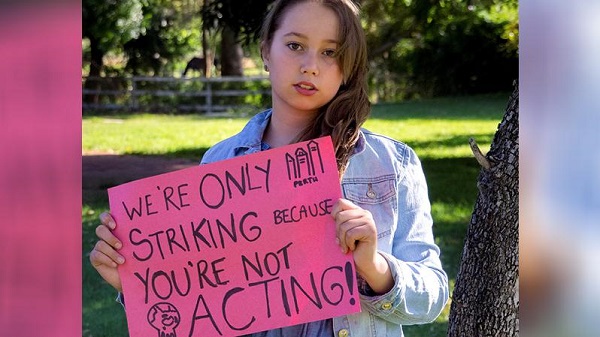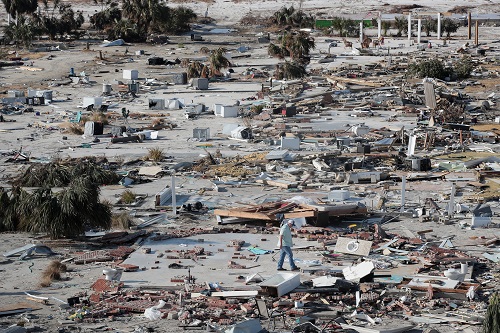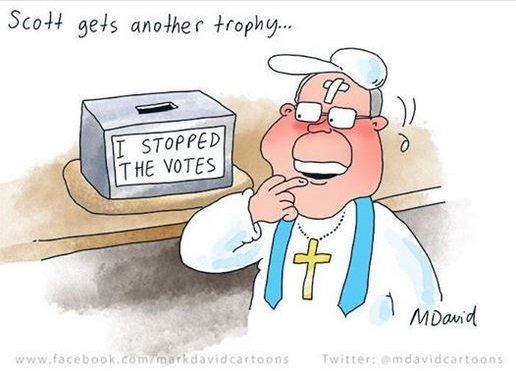
ScoMo didn’t get the message:
- whoso shall offend one of these little ones … it were better for him that a millstone were hanged about his neck, and that he were drowned in the depth of the sea.

ScoMo didn’t get the message:
PM Scott Morrison’s government has just been rated by voters polled in Newspoll at 45-55 TPP against Labor, which would translate to a 20-seat loss if an election were held today.
You can’t beat Labor on policy, that’s the lesson Michael Kroger took from Victoria, so ScoMo has decided to make it personal, telling Bill Shorten the election is ‘between you and me’:

Essential Report and Fairfax-Ipsos have both tightened to a Labor lead of 52-48 as Labor plans to launch its climate change policies on Thursday.
Which makes the PM for fair dinkumness perhaps surprisingly competitive. Continue reading Polls tighten as Labor launches climate policy

Today’s AFR carries an article Investors warn of consequences of cutting electricity retailer margins (the print version was “‘Crazy’ to target energy retail margins, warn big investors”):
Big investors have slammed the Morrison government’s “big stick” approach to the electricity sector, saying any move to force companies to cut prices will have a major impact on profits, future investment and result in less competition in the long term. Continue reading Big investors slam ‘big stick’ approach
That was the headline in the dead tree version of the AFR. Bill Ferris is the outgoing Science and Innovation Australia chair. He says he didn’t find the Coalition government’s rewriting of the ACCC report to support coal-fired power a helpful signal, but:
“That ain’t going to stop and it won’t stop because a government is concerned about the electoral impact. Continue reading Climate clippings 227
Scott Morrison put in a fine effort to stop the votes that would have retained Wentworth for the Liberals. And he succeeded. Now he seems intent on stopping the $200 billion worth of investment that will be needed to transform the electricity sector.
Craig Emerson in his weekly column for the AFR on Monday drew attention the Venezuelan comparison. On 22 November 2017 they passed a law:
Cartoonist Mark David shows how Scott Morrison applied his proven skills in the Wentworth by-election:

Many commentators including Laura Tingle, talking to Phillip Adams, said the numerous own goals from the Coalition prior to the election turned enough votes away from the Liberal candidate David Sharma and towards Kerryn Phelps for the latter to win. The latest count shows Phelps ahead 51/49 two party preferred, with Phelps coming from a first preference count of 29.1% as against Sharma of 43.2%. Continue reading Wentworth a tipping point?
The target should not be 1.5°C; rather we should aim for a safe climate. James Hansen told us in 2007 that to achieve a safe climate we need to bring GHG concentrations down to 350 ppm as soon as possible. That’s CO2 equivalent, not CO2. Current CO2e is not often quoted, but would be around 500 ppm on the basis that CO2 is about 80% of total GHGs. Also we need to focus on what we are doing to the planet over centuries and millennia, not just the next 50 to 100 years.
However, the IPCC team putting the report together were not asked what the goal should be. They were asked to build a scenario for achieving the 1.5°C warming limit specified as desirable in the Paris Agreement of 2015, and to look at the impacts of a 1.5°C world as against a 2°C world. Two Degrees came out of Europe in the 1990s, achieved a general currency, then became the official goal of at the Conference of Parties of the UNFCCC in Cancun in 2010. At that time there was a move mainly by many of the island states vulnerable it inundation for a more ambitious target. Essentially the whole group at Paris agreed to try.
However, while two degrees was commonly seen as a guardrail for a safe climate even by many scientist, it was never a scientifically derived goal for a safe climate.
The IPCC Special Report on 1.5°C is important because it shows that the path to 1.5°C has a high degree of difficulty and has implications which to most will not be acceptable. It’s importance is in changing the discourse, from being seen as an achievable safe guardrail to 1.5°C as difficult to achieve and far from safe. Continue reading IPCC on 1.5°C: the target is wrong, but we have a strong wake-up call
There were three scams in the Government’s release of the latest quarterly update of the National Greenhouse Gas Inventory for March 2018.
The first, as reported by the ABC, FOI documents obtained by the Australian Conservation Foundation show that the Government sat on the report for seven weeks, then released it on 28 September, just before national football finals in the AFL and NRL, and amidst media preoccupation with the royal commission into banks.
That means the report was available to government from 10 August, fully two weeks before Malcolm Turnbull was turfed out on 24 August. Hence while political decisions were being made about the National Energy Guarantee, important information was being withheld.
Secondly, now the data is out, this is what the government wants us to concentrate on:
I believe that by the middle of next decade people denying significant human agency in causing climate change will constitute a crank fringe and will basically be ignored.
The Climate of the Nation 2018 report, now produced by The Australia Institute (pdf here), found that more Australians accept the reality of climate change than at almost any time since Climate of the Nation began in 2007.
Acceptance of climate change closely follows voting intentions, but interestingly while One Nation (22%) and Nationals (15%) voters are the most likely to say they do not think that climate change is occurring, this declined significantly for both groups since 2017.
The effects of heat are the driving concern about the impact of climate change, and people were most concerned about more droughts and flooding affecting crop production and food supply (78%), destruction of the Great Barrier Reef (77%) and more bushfires (76%).
“One of the most concerning developments in politics is that the quality of an argument no longer matters,” he said.
He went on to say that they all knew we needed to head for zero emissions. They just wanted to know what the rules would be on the way.
That was from the AFR article Labor backs the NEG as political mess sends power prices up. The print edition carried it as a front page headline story:

Some time in the last few days I heard a person who should know better say that 1800 coal-fired power plants were being built around the world. One wonders where this (dis)information comes from. It went unchallenged by the ABC interviewer, showing once again that ABC journalists and presenters need an update on climate change – in the national interest.
As Adam Morton at The Guardian writes The world is going slow on coal, but misinformation is distorting the facts. Back in June, John “Wacka” Williams asked the Parliamentary Library how many coal plants there were, how many were being built, how many closed etc and could he have the information by 4pm?
The Library included the information that 621 units were being built, the point here being that power plants typically have multiple units. Hazelwood had eight.
Unfortunately, this information was wrong. Continue reading Coal power fading fast